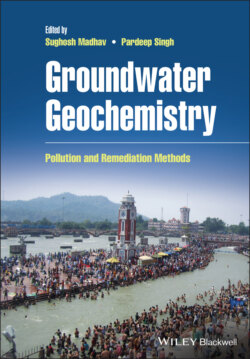Читать книгу Groundwater Geochemistry - Группа авторов - Страница 66
3.1 Introduction
ОглавлениеSalinity is a major social, economic, and environmental menace in climates with low rainfall and high evapotranspiration (Jabbar and Chen 2008; Abuelgasim and Ammad 2018). In general, the surface water supply in arid and semi‐arid climates is scarce, which shifts the attention of policymakers to groundwater. Groundwater in these regions is very limited and considered a major resource for sustaining terrestrial ecosystems (Balaji et al. 2019a, b; Huang et al. 2019). In addition, intense urbanisation, demand for freshwater due to an increase in population, and poor management strategies have generated additional stress to this limited resource which leads to lowering groundwater levels (Cosgrove and Loucks 2015; Nagaraju et al. 2016). Therefore, people dig bore wells to great depths for groundwater that are basically rich in soluble salts (Miglietta et al. 2017; Akinlalu and Afolabi 2018). Among complex environmental issues such as droughts, heavy blowing winds, heatwaves, and floods, salinity is also a major issue. It turns soils and irrigated land more saline, which impairs crop growth and leads to low production and land degradation (Shrivastava and Kumar 2015). Moreover, salinity is a serious public health concern and its consequences are seen mostly in coastal drylands. Consuming a higher amount of salt increases blood pressure, which increases the risk of cardiovascular disease that induces heart stroke and attack. Nowadays, it accounts for a large number of deaths worldwide. Among various direct and indirect sources, salinity is one of many serious issues that affect the hydrological cycle in terms of water quality deterioration (Pulido‐Bosch et al. 2018). In urban landscapes (non‐agricultural lands) it affects the structures by subsidence, corrosion, and water quality deterioration. All these practices result in the loss of arable lands that affects terrestrial habitats, particularly in drylands. It is estimated that the annual loss of arable land due to salinity is 20–50% (Pitman and Läuchli 2002). It is projected that about 50% of the world's arable land that is to be lost by 2050 will be attributed to the salinity problem (FAO 2009; Hussain et al. 2020).
Therefore, some knowledge on salinity‐related health issues, management strategies, and reclamation techniques are needed to tackle this exacerbated situation. Hence, the sources, implications, and reclamation strategies are discussed in this chapter.
